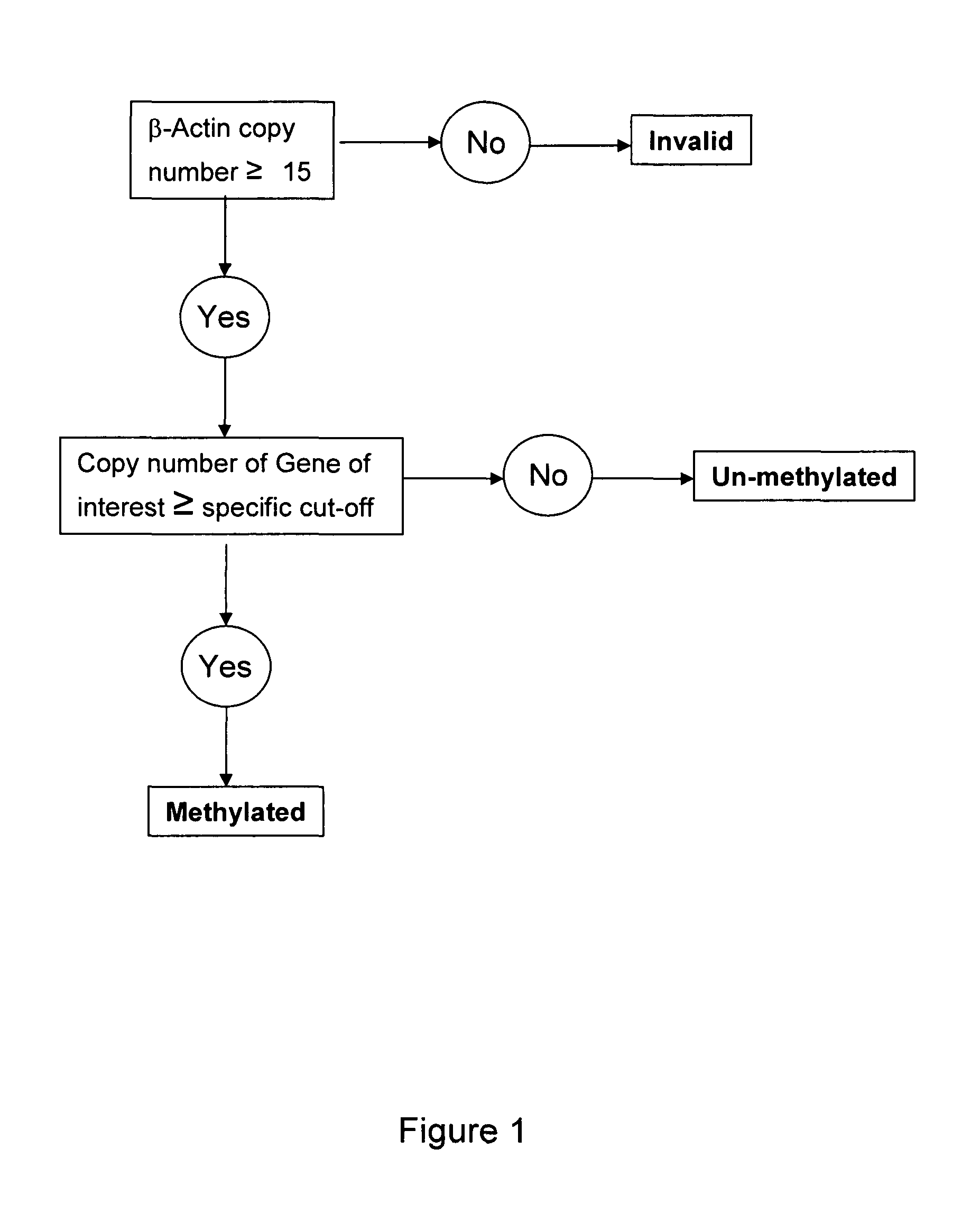Novel Markers for Bladder Cancer Detection
a technology of bladder cancer and markers, applied in the field of new markers for bladder cancer detection, can solve the problems of high sensitive and specific production, and achieve the effect of reducing the likelihood of resistance to treatment and increasing the likelihood of successful treatmen
- Summary
- Abstract
- Description
- Claims
- Application Information
AI Technical Summary
Benefits of technology
Problems solved by technology
Method used
Image
Examples
example 1
A Real-Time MSP Assay for Early Detection of Bladder Cancer
Materials and Methods
[0123]Marker identification: In order to identify markers able to detect specifically bladder cancer over other cancer types using urine samples, a screen was initially carried out on tissues. For this screening, several assays corresponding to several genes were tested on cancer tissue samples of various origins. Selected genes were used for establishing a single gene assay or a multi-gene assay when combined with other genes (based upon re-expression profiles of bladder cancerous cell lines).
Marker selection in urine: Selected assays from the screening on tissues were tested on urine samples from training set 2 and set 3 (see below) for evaluation of sensitivity and specificity in diagnosing bladder cancer.
Urine sample collection: For the study on bladder cancer, prospective, randomly collected urine samples from multiple centers in Belgium, UK and The Netherlands were used (BLCa 001 prospective study)...
PUM
| Property | Measurement | Unit |
|---|---|---|
| Time | aaaaa | aaaaa |
| Fraction | aaaaa | aaaaa |
| Fraction | aaaaa | aaaaa |
Abstract
Description
Claims
Application Information
 Login to View More
Login to View More - R&D
- Intellectual Property
- Life Sciences
- Materials
- Tech Scout
- Unparalleled Data Quality
- Higher Quality Content
- 60% Fewer Hallucinations
Browse by: Latest US Patents, China's latest patents, Technical Efficacy Thesaurus, Application Domain, Technology Topic, Popular Technical Reports.
© 2025 PatSnap. All rights reserved.Legal|Privacy policy|Modern Slavery Act Transparency Statement|Sitemap|About US| Contact US: help@patsnap.com

